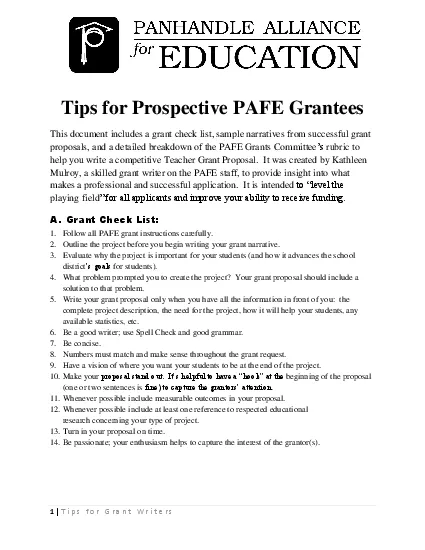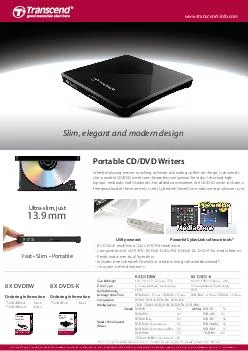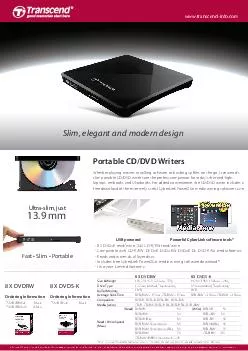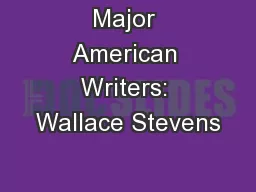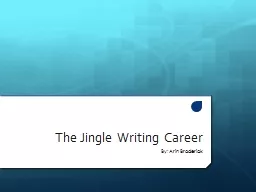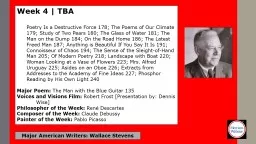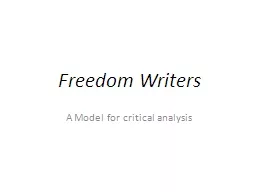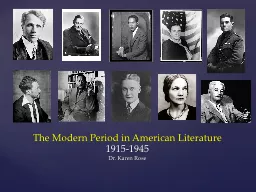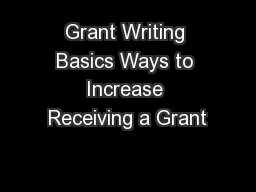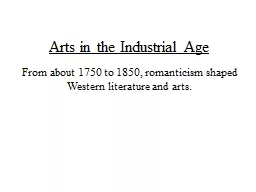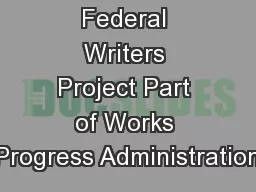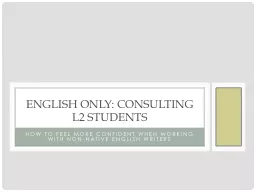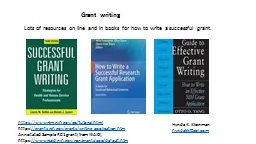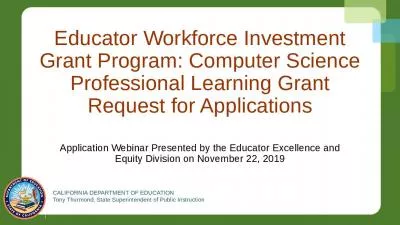PDF-Tips for Grant Writers
Author : lauren | Published Date : 2021-08-08
1Tips for Prospective PAFE GranteesThis document includesa grant check listsample narrativesfrom successful grant proposals and a detailed breakdown of the PAFE
Presentation Embed Code
Download Presentation
Download Presentation The PPT/PDF document "Tips for Grant Writers" is the property of its rightful owner. Permission is granted to download and print the materials on this website for personal, non-commercial use only, and to display it on your personal computer provided you do not modify the materials and that you retain all copyright notices contained in the materials. By downloading content from our website, you accept the terms of this agreement.
Tips for Grant Writers: Transcript
Download Rules Of Document
"Tips for Grant Writers"The content belongs to its owner. You may download and print it for personal use, without modification, and keep all copyright notices. By downloading, you agree to these terms.
Related Documents

